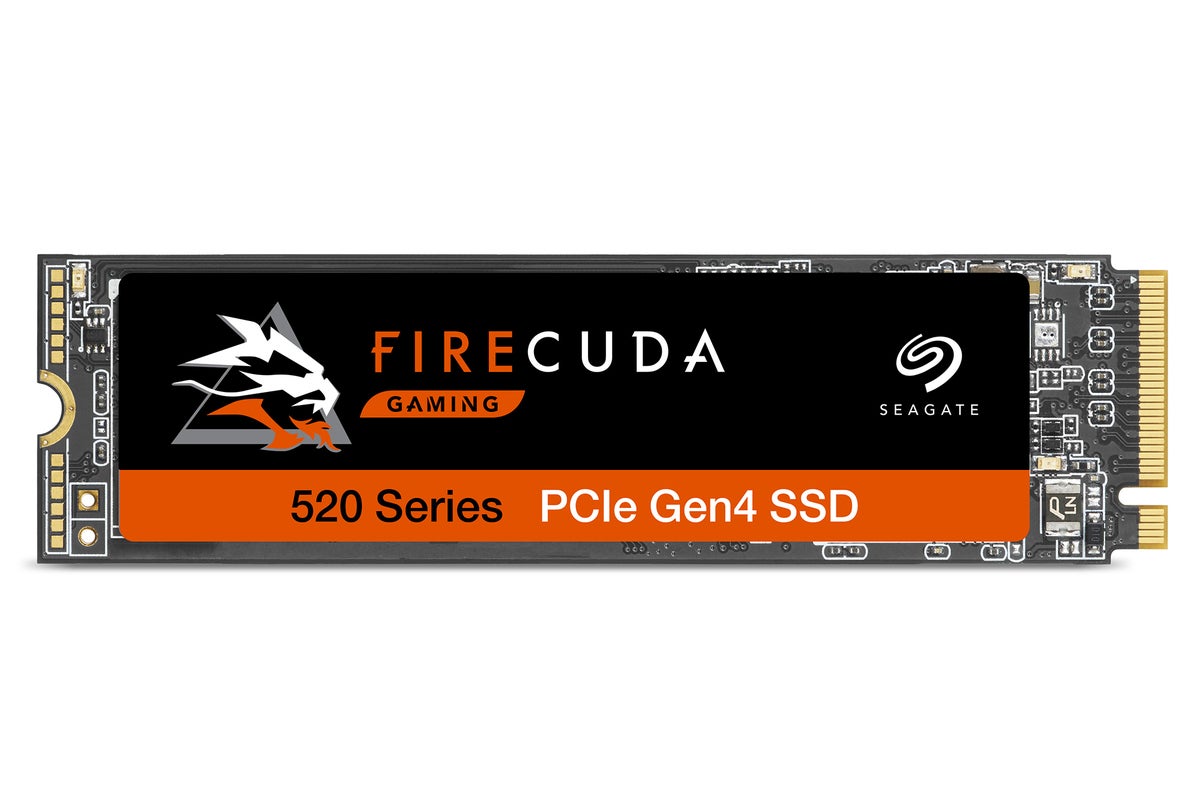Seagate’s FireCuda 520 is fast, though only on a par with other premium M.2 NVMe SSDs we’ve tested using commonplace third-generation PCIe. However, if you’re running a late-model AMD system, the 520’s PCIe 4 support will garner you a cool 20-percent jump in sustained transfer rates. We like that.
This review is part of our ongoing roundup of the best SSDs. Go there for information on competing products and how we tested them.
Design, price, and specs
The FireCuda 520 is a 2280 (22mm wide, 80mm long), M.2 NVMe, x4 (four lane) PCIe 4 SSD. It feels a little weird saying that last, as we’ve been on PCIe 3 for quite a long time.
The FireCuda 520 series uses a Phison 16 controller (the only such beast we’re aware of at the moment) managing 96-layer TLC (Triple-Level Cell/3-bit) NAND. There’s one gigabyte of DRAM cache per terabyte of storage, and up to a third of the drive can be employed as secondary cache by writing only one bit (SLC mode), instead of three (TLC) per cell.
The FireCuda 520 is available in three capacities: 500GB for $125 on AmazonRemove non-product link, 1TB (the capacity we tested) for $250 on Amazon, and 2TB for $430 on AmazonRemove non-product link. That’s roughly 25 cents per GB, and on a par with the Samsung 970 Pro and other top-tier drives. But you may have noticed that there are M.2 PCIe NVMe drives available for less than 10 cents per gigabyte, so this isn’t a bargain hunter’s drive. There is value in the premium, though.
The drives carry a five-year warranty and are rated for an extremely generous 1,800 TBW (TeraBytes Written—how much data can be written over the life of the drive) for every 1TB of capacity—part of what the extra cash buys you.
Do you need PCIe 4?
To be fair, there isn’t a lot in the way of PCIe 4 hardware out there at the moment (all late-gen AMD), so we haven’t really been able to kick the fourth-generation tires thoroughly. However, there was a noticeable gain in sustained throughput with PCIe 4 during our testing, as you’ll see in the performance section below.
 Seagate
SeagateSeagate’s Firecuda 520 offers increased sustained transfer rates over PCIe 4, and top-flight performance over PCIe 3.
Fast sustained throughput is nice, but much of NVMe’s real and perceived speed comes from its super-fast seek times (the time it takes to locate data before transferring it). There’s seemingly no benefit to be derived from PCIe 4 on that front.
For more on real world versus benchmarks, take a look at our HighPoint RocketStor 6661a NVMe RAID controller review. We’d love to retest that on PCIe 4.
Performance
We test using Windows 10 64-bit running on a Core i7-5820K/Asus X99 Deluxe system with four 16GB Kingston 2666MHz DDR4 modules, a Zotac (NVidia) GT 710 1GB x2 PCIe graphics card, and an Asmedia ASM2142 USB 3.1 card. It also contains a Gigabyte GC-Alpine Thunderbolt 3 card, and Softperfect Ramdisk 3.4.6 for the 48GB read and…
https://www.pcworld.com/article/3453638/seagate-firecuda-520-nvme-ssd-review.html#tk.rss_all
